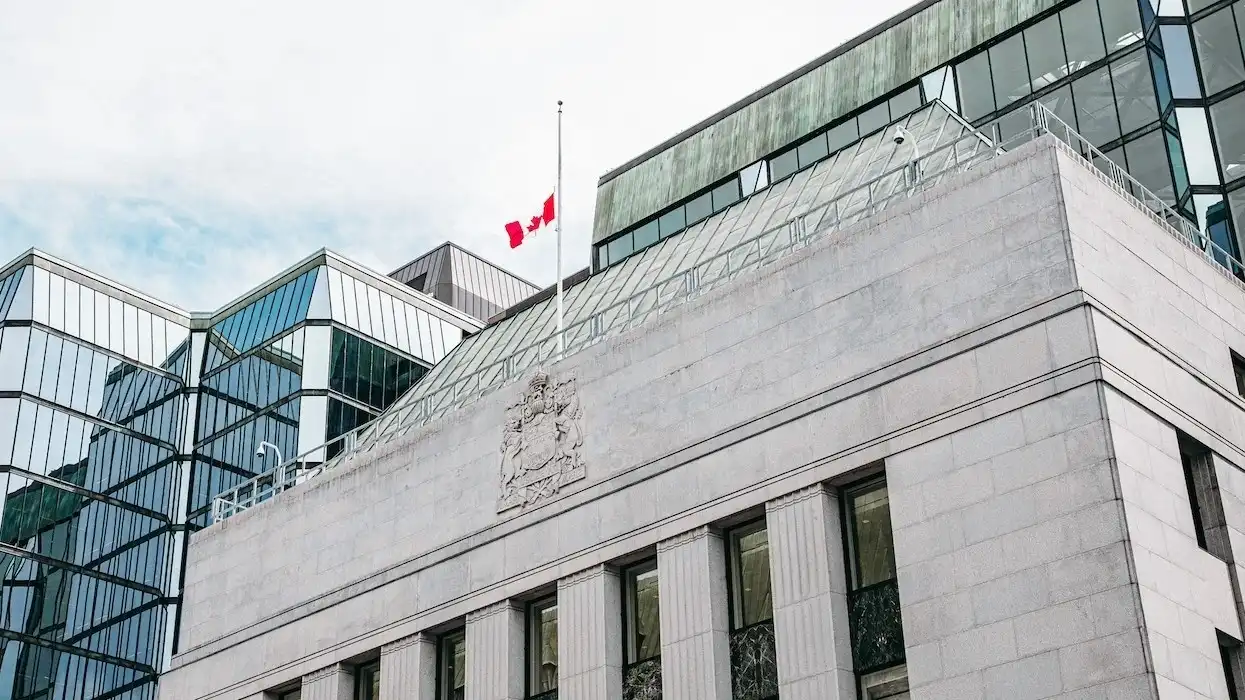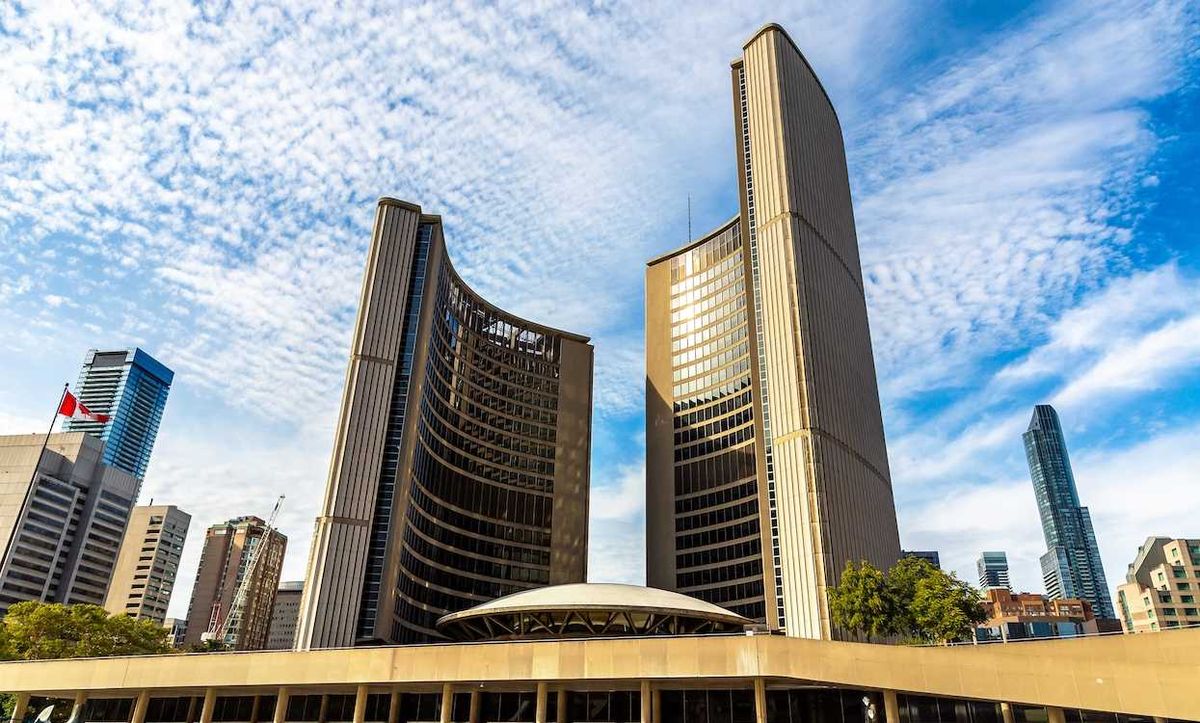UPDATE: On Wednesday morning the Bank of Canada announced an interest rate cut to bring the overnight lending rate to 2.50%.
This Wednesday, September 17 will bring another Bank of Canada (BoC) interest rate announcement, and the third-last of the year. The country is going into this decision with a policy rate of 2.75%, held steady at this level since March of this year.
Although there wasn’t much mystery leading up to the Bank’s last announcement in late July — it culminated in a third-straight hold, as anticipated across the board by economists with Canada’s ‘Big Five’ banks — there’s more room for debate this time around.
One reason for that is weaker economic conditions overall, with a loss of 66,000 jobs and the new cycle-high uptick in unemployment to 7.1% as of August being particularly salient data points going into the central bank’s upcoming decision.
Another is that Governing Council laid out three scenarios in their latest Monetary Policy Report, and two of them seemed to tee up for further easing later this year. The scenarios “are designed to capture the uncertainty about US trade policy,” Governor Tiff Macklem said in a statement released in tandem with the July rate announcement.
That’s all to say, we could be looking at a 25 basis-points (bps) interest rate cut this week — but a strong Consumer Price Index (CPI) reading on Tuesday morning could change the name of the game. Here’s what the major economists are thinking.
TD: ‘Shifted tides toward a cut’
Although we’re still due for one last Consumer Price Index (CPI) reading from Statistics Canada — that’s slated for tomorrow — TD Economist Marc Ercolao writes in a weekly update from Friday that “softer economic data” in recent weeks “led by a further deterioration in Canada’s job market has shifted the tides toward a rate cut” this week.
“Markets are pricing a 90% probability of a 25 bps cut, up from around 30% during the first half of August,” Ercolao adds. “We’ve long argued that the BoC has reason to cut rates this year as ongoing trade uncertainty and loosening labour markets work to cool residual inflation pressures.”
Nonetheless, CPI is set to be the ‘nail in the coffin’ for a cut — but only if “waning” core measures show in the print.
“However, an upside surprise to inflation readings may keep the BoC to the sidelines. Overall, recent data flows have more or less tracked the Bank’s forecast scenario consistent with a rising need for a further reduction in the policy rate,” Ercolao says. “Whatever happens next week, we believe the BoC’s cutting cycle is nearing the end, with 2.25% policy rate — the bottom end of their neutral rate range — being the target.”
The long-term forecast: The policy interest rate will be brought down to 2.25% by the fourth quarter, and will be kept at that level through to the end of 2026.
RBC: “Another close call”
As they have ahead of the past handful of interest rate announcements, RBC Economists Nathan Janzen and Claire Fan maintain that the BoC has “another close call” on their hands.
“Economic data in Canada has deteriorated, but not significantly more than the BoC expected. A 1.6% decline in Q2 gross domestic product was broadly in line with the 1.5% decline assumed in the July Monetary Policy Report,” they write in new note. “Early data for Q3 suggests that the Q2 decline — driven largely by a pullback in net trade, and concentrated in the manufacturing sector — is unlikely to be repeated. Export volumes stabilized into July, and the preliminary estimate of July’s manufacturing sales showed a 1.8% increase.”
Although Janzen and Fan acknowledge that certain sectors have been adversely affected by tariffs, they counter with the sentiment that trade disruptions have “yet to spread broadly across the economy,” making the central bank’s case for a rate cut weaker.
“Labour markets have softened, but with job losses largely concentrated in heavily trade-exposed sectors. There is clearly an argument for policy support to those sectors, but fiscal policy (federal and provincial government spending) is better suited to provide targeted and timely support than across-the-board interest rate cuts,” they add.
Like TD economists, experts with RBC say that “CPI could be the deciding factor between a cut and hold” this week. They are anticipating headline price growth to edge up to 2.1% (from 1.7% in July), while trim core CPI hold at around 3%.
The long-term forecast: The policy interest rate will be kept at 2.75% through 2025 and to the end of 2026.
CIBC: ‘Expected to restart cuts’
Wednesday will not only bring a BoC interest rate announcement, but an announcement from the US Federal Reserve. Against that context, CIBC Economist Ali Jaffery muses in a recent report that there’s a stronger case for a cut in Canada over the US.
“The American economy is just starting to show some signs of slack, whereas Canada has moved deeper into slack conditions throughout the year, with a real-time output gap closer to -1.5%, just a few threads above recession,” Jaffery says. “That growing slack has helped push some measures of wage growth below inflation already. ‘Buy Canadian’ sentiment has given consumer spending a lift, but with winter travel in Canada less attractive, that boost will fade.”
“Enough dust has also settled to allow Governor Macklem to focus on what lies ahead and be less data-dependent. Unfortunately, that outlook isn’t particularly encouraging,” Jaffery goes on to say. “The global economy is slowing, as is the US, and a sweeping trade deal does not seem to be on the horizon for Canada.”
Although economists with CIBC articulate that outlook for Canadian inflation “looks less concerning,” and that the BoC is likely to “look through” price rises from US imports spilling over into Canadian CPI, they maintain that “the central bank is expected to restart interest rate cuts with a 25bp move, and keep the door open to further reductions.”
The long-term forecast: The policy interest rate will be brought down to 2.50% this month, and 2.25% by December and will be kept at that level through 2026.
BMO: ‘Small risk they hold off on a cut’
Meanwhile, economists with BMO are anticipating that both North American central banks — the BoC and Feds — will opt for a quarter-point cut this week.
“For the Bank of Canada, the CPI report the day before poses small risk that they hold off; for the Fed, there’s a very small chance priced in that they go 50,” writes Economist Robert Kavcic in a recent note.
“While both are looking at softening job market conditions but still-stubborn inflation, the Fed is sitting with rates at a meaningfully-higher level going in,” Kavic adds. “Looking ahead, we continue to believe there is scope for the Bank of Canada to shave rates down by 75 bps from here, and the market has fully priced in 50 bps of easing by March 2026.”
The policy interest rate will be brought down to 2.50% this month, 2.25% by December, and 2.0% through 2026.
Scotiabank: ‘Easing in 2025 before taking it back’
In his typical fashion, Scotiabank Economist Derek Holt has meticulously compiled cases for and against a BoC rate cut this week in a report from Friday — though he does preface this with Scotiabank’s broader forecast that they anticipate a 25-bps cut this week, with openness “to further easing in keeping with our forecast for 50 bps of cuts this year until taking them back later next year.”
On the ‘for a cut’ side, Holt points to the “downside risks” of inflation, given the slack in economy estimated in latest Monetary Policy Report — with some indication that it could be greater. “Excess supply conditions could make it more challenging to steer inflation to land on 2% without undershooting over time,” Holt adds.
Among the ‘against a cut’ reasons — another hold — economists with Scotiabank note that core inflation remains sticky and that monetary policy easing to date is still working through the economy and “can take 12–24 months to have its full effects.”
“We’re only just past the one-year mark for the first cut and six-month point for the last cut,” Holt writes. “More time may be needed for GDP to respond amid the risk of overdoing it with further easing.”
The long-term forecast: The policy interest rate will be brought down to 2.25% this year, and raised to 2.75% in 2026.























